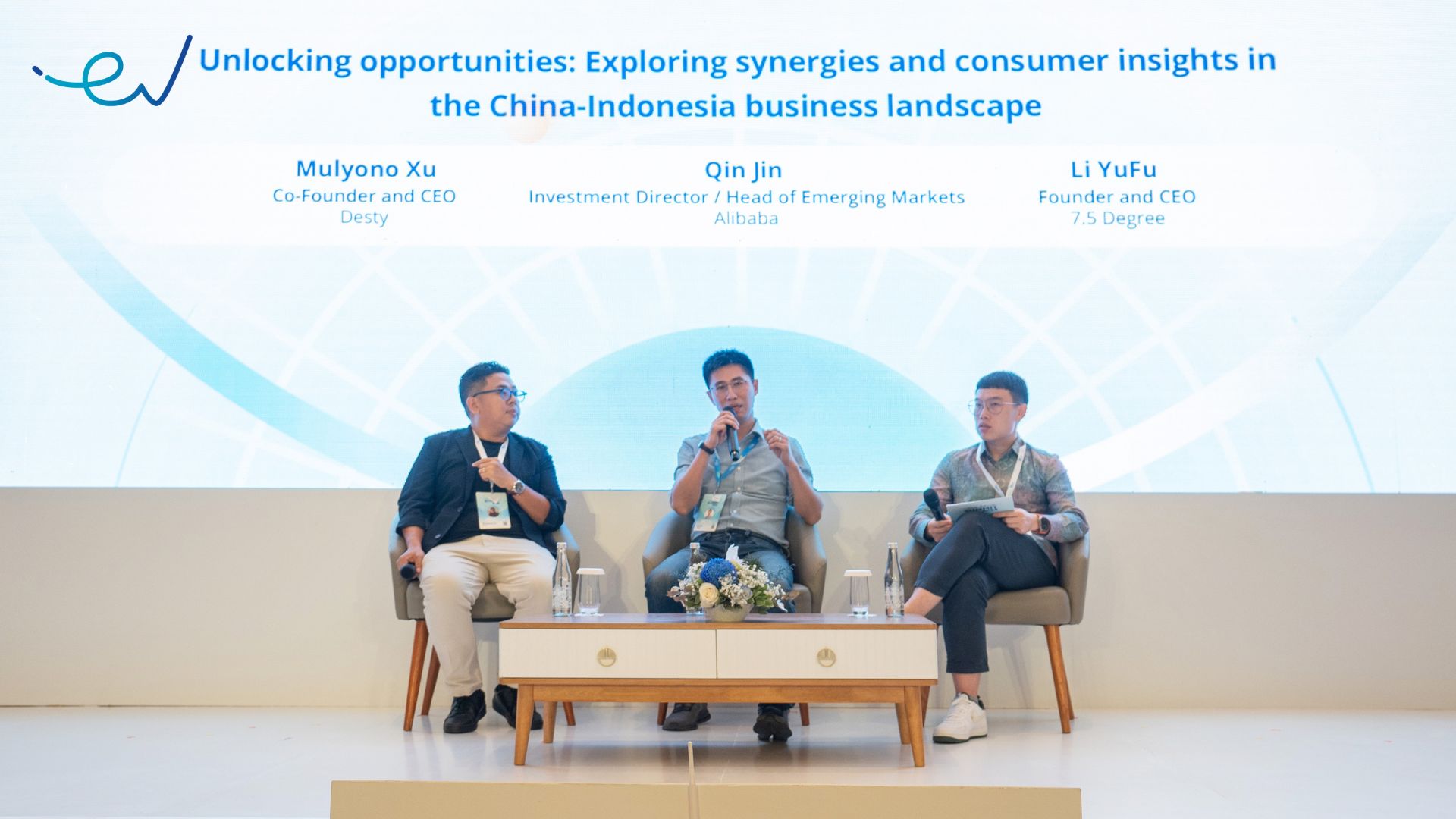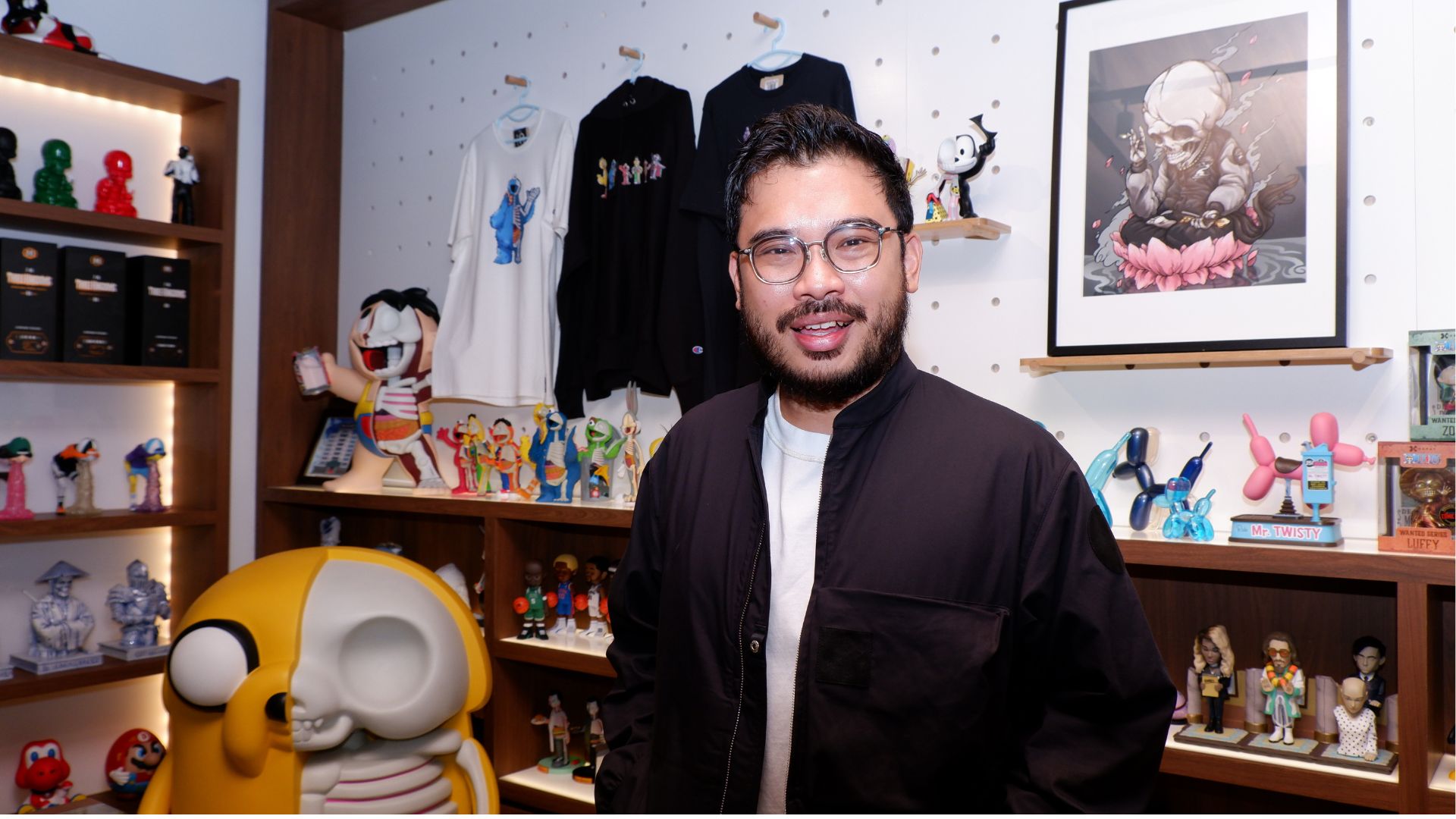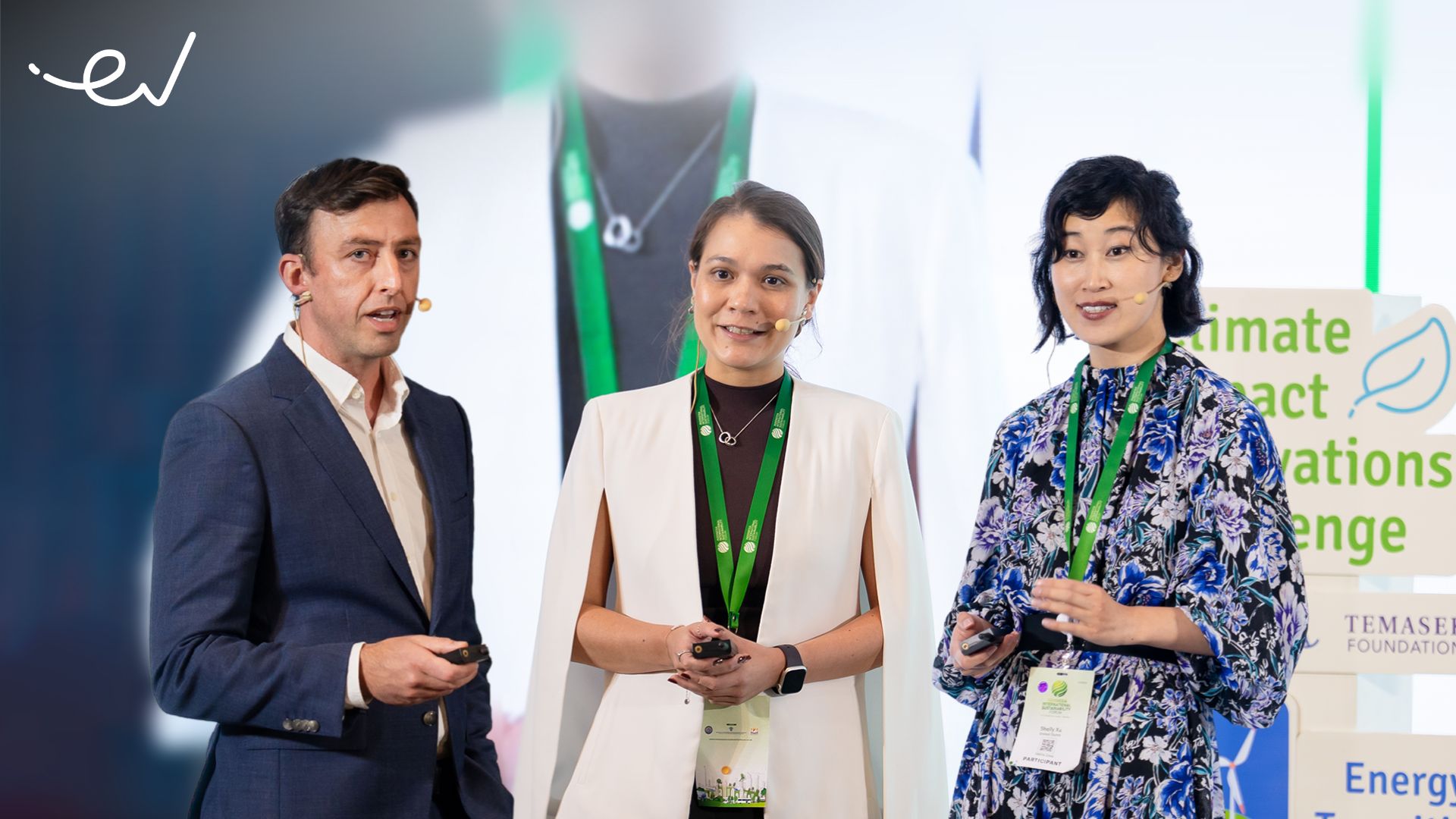Interaksi dinamis antara ekosistem teknologi Tiongkok dan Indonesia memberikan banyak wawasan unik dan kolaborasi lintas-negara. Pada East Ventures Summit 2024 yang diadakan baru-baru ini, para pemimpin industri yang memiliki pengalaman dan latar belakang yang kuat di industri teknologi Tiongkok—Mulyono Xu, Co-Founder dan CEO dari Desty, Qin Jin, Investment Director/Head of Emerging Markets Alibaba, dan dimoderatori oleh Li Yu Fu, Pendiri dan CEO 7.5 Degree—membagikan perspektif mereka.
Panel ini menggarisbawahi ketertarikan para founder startup asal Tiongkok terhadap peluang pasar Indonesia yang melimpah dan membahas topik-topik penting seperti membina kerja sama, investasi strategis, dan peluang masuk untuk pertumbuhan kedua negara dalam ekosistem teknologi.
Ekosistem bisnis Tiongkok-Indonesia
Transkrip diskusi panel di bawah telah diedit agar singkat dan jelas.
Li Yu Fu: Topik pertama dalam diskusi ini adalah menjembatani budaya di pasar, melihat ekosistem teknologi Tiongkok dan Indonesia dari segi investasi dan kewirausahaan. Mulyono, berdasarkan pengalaman Anda selama lebih dari satu dekade, termasuk 15 tahun di Tiongkok, wawasan unik apa yang bisa Anda bagikan dari pengalaman Anda di industri teknologi Tiongkok yang bisa diterapkan di Indonesia?
Mulyono Xu: Saya menghabiskan masa kuliah saya di Hangzhou, di mana ini adalah tempat Alibaba pertama kali didirikan. Saya menjadi sangat tertarik dengan perusahaan startup, internet, dan ekonomi digital. Saya percaya bahwa semangat dan cara orang-orang di Tiongkok memandang bagaimana ekonomi digital dan teknologi dapat mengubah masyarakat dan bisnis merupakan hal yang fundamental dalam evolusi industri ini selama 20 tahun terakhir. Pola pikir tersebut merupakan sesuatu yang dapat kita pelajari di Indonesia—bukan hanya aspek praktisnya, namun juga keyakinan bahwa Indonesia dapat mengambil manfaat dari perubahan infrastruktur yang dibawa oleh ekonomi digital dan teknologi. Itulah poin pertama saya.
Kedua, banyak hal yang telah dialami oleh Tiongkok selama 20 tahun terakhir terjadi juga di Indonesia; tetapi dalam beberapa hal, terjadi lebih cepat. Kita bisa belajar dari Tiongkok dan beradaptasi secara lokal, tetapi pada titik tertentu, kita perlu mengikuti jalan kita sendiri. Perusahaan-perusahaan transportasi online kita, misalnya, muncul lebih cepat daripada di Tiongkok karena kita telah belajar, beradaptasi, dan berakselerasi lebih cepat. Hal yang sama berlaku untuk e-wallet. Di Tiongkok, mereka mulai sekitar tahun 2012-2013 dan berkembang pesat. Di Indonesia, mereka baru mulai sekitar tahun 2016, namun prosesnya berlangsung lebih cepat. Jadi, poin kedua saya adalah bahwa sementara kitabelajar dan beradaptasi, kita juga berevolusi dengan lebih cepat.
Li Yu Fu: Berdasarkan hal tersebut, terutama poin kedua Anda, ini seperti teori “mesin waktu”—apa yang membutuhkan waktu 20 tahun di Tiongkok terjadi lebih cepat di Indonesia. Qin Jin (JQ), dari sudut pandang investor, persamaan dan perbedaan apa yang Anda lihat antara ekosistem teknologi di Tiongkok dan Indonesia selama satu dekade terakhir?
Qin Jin (JQ): Saya setuju dengan Mulyono. Anda bisa menyebutnya sebagai mesin waktu atau pengenalan pola (pattern recognition), bukan? Terutama ketika para wirausahawan memutuskan apa yang harus atau bisa mereka lakukan dan mempresentasikannya ke investor, akan sangat membantu jika mereka memulainya dari tingkat yang lebih tinggi. Kami melihat model bisnis dari Amerika Serikat (AS), Tiongkok, Jepang, Korea, dan India dan berpikir, “Mungkin kami bisa melakukan hal yang sama di Indonesia.” Saya pikir hal itu masih berlaku.
Namun jika saya bisa mengambil satu hal dari sesi sebelumnya, itu adalah tentang transisi para eksekutif menjadi wirausahawan; selalu menarik. Contoh yang mereka gunakan terakhir kali adalah pemasaran mesin pencari (search engine marketing atau SEM) di Facebook. Begitu Anda menerapkan ide ke dalam tindakan, ada 1.000 detail yang harus dipikirkan, dan Anda tiba-tiba menyadari bahwa ada banyak asumsi yang Anda anggap remeh. Banyak hal yang sedikit berbeda di Indonesia dibandingkan dengan tempat lain, dan semua detail ini akan bertambah, membuat segala sesuatunya menjadi sangat berbeda. Salah satu contohnya adalah e-grocery. Di Tiongkok, beberapa hal dianggap biasa, tetapi di Indonesia, model pengiriman dan sensitivitas harga berada di tingkat yang sama sekali berbeda—entah itu lebih baik atau lebih buruk.
Li Yu Fu: Topik kita selanjutnya adalah tentang kolaborasi lintas-negara. Setelah kita membahas dasar-dasarnya, mari kita telusuri bagaimana Tiongkok dan Indonesia dapat berkolaborasi. Pertanyaan pertama saya untuk Anda, JQ. Mengingat pengalaman Alibaba yang luas di berbagai pasar, apa saja hasil strategis atau pencapaian penting dalam hal investasi di Indonesia?
Qin Jin (JQ): Satu hal penting yang kami pelajari bahwakita semua adalah bagian dari sebuah ekosistem. Kembali ke contoh sebelumnya, mari kita bahas tentang e-wallet. Bahkan hingga saat ini, e-commerce masih menyumbang sebagian besar transaksi e-wallet. Alibaba beruntung dapat berinvestasi di salah satu perusahaan e-wallet terkemuka di Indonesia, yang melengkapi bisnis e-commerce kami dengan sangat baik. Ini adalah contoh bagaimana kami menghadirkan teknologi dan pengetahuan, tetapi kami bukanlah solusi satu atap. Kami perlu bermitra dengan para juara lokal, dan melalui kolaborasi yang saling menguntungkan, semua orang akan mendapatkan manfaat-tidak hanya dari segi ekonomi, namun juga dari segi manfaat bagi pengguna dan masyarakat secara keseluruhan.
Li Yu Fu: Berbicara tentang kolaborasi, selalu ada kendala bahasa, kendala budaya, dan banyak potensi kendala lainnya. Mulyono, apa peran pemahaman budaya dalam kolaborasi bisnis yang sukses antara Tiongkok dan Indonesia?
Mulyono Xu: Ini adalah topik yang sangat menarik bagi kami karena tim teknisi kami berada di Hangzhou, sementara tim bisnis, pemasaran, dan penjualan kami berada di Jakarta. Pada tahun pertama, kami mengalami benturan budaya yang signifikan. Akhirnya, setelah sekitar satu tahun, kami menemukan pola yang baik untuk mengelola kedua tim.
Sebagai contoh, tim produk harus berada di sisi pengguna, jadi kami memiliki manajer produk di Indonesia, sementara sisi teknis ditangani di Tiongkok. Hal yang krusial dalam proses ini adalah prosedur operasi standar atau SOP dan dokumentasi. Meskipun sisi produk berada di Indonesia, tanpa proses dokumentasi yang ketat—terutama bagi mereka yang terbiasa dengan bidang teknik yang akan memahami hal ini—dapat menimbulkan banyak masalah dan ketidakefisienan dalam komunikasi.
Jadi, tantangan budaya yang pertama adalah mencari tahu bagaimana kita bekerja sama dan memahami aspek mana yang memiliki pengaruh lebih besar pada setiap tim. Setelah itu, memiliki prosedur operasi standar (SOP) yang kuat dan dokumentasi sangatlah penting.
Namun, pemahaman budaya bukanlah sesuatu yang bisa Anda tempelkan begitu saja di dinding. Ini adalah sesuatu yang harus benar-benar Anda pahami.
Li Yu Fu: Ketika berbicara tentang pemahaman budaya dalam bisnis, terutama dalam investasi di Indonesia atau Tiongkok, apa perannya dalam kolaborasi yang sukses antara perusahaan-perusahaan Tiongkok dan Indonesia?
Qin Jin (JQ): Satu hal penting yang saya pelajari adalah pentingnya memberikan informasi latar belakang secara ringkas. Selalu asumsikan bahwa kolega Anda, baik yang berasal dari latar belakang budaya atau fungsi yang berbeda, tidak mengetahui apa pun tentang proyek Anda, tidak peduli seberapa penting proyek tersebut. Menurut saya, hal ini sangat penting. Mungkin memang perlu waktu lebih lama, tetapi pada akhirnya, hasilnya jauh lebih baik dalam jangka panjang. Itu adalah pelajaran penting bagi saya.
Li Yu Fu: Mari kita bahas mengenai masuknya founder Tiongkok yang mencari peluang di Indonesia, terutama setelah tahun 2022. Kita telah melihat banyak investor dan pengusaha Tiongkok yang datang ke Indonesia dan Asia Tenggara. Beberapa teman saya di Shanghai mengatakan kepada saya bahwa pada tahun 2022, seluruh penerbangan dipenuhi oleh para investor yang menuju Singapura dan Indonesia. Pada tahun 2023 dan 2024, bahkan lebih banyak lagi founder yang menyusul.
Apa saja masalah utama dalam ekosistem bisnis di Indonesia? Dan keuntungan apa yang dimiliki pengusaha Tiongkok ketika menemukan peluang di sini?
Mulyono Xu: Pada tahun 2022, 2023, dan sekarang memasuki tahun 2024, telah terjadi gelombang besar-besaran orang dari daratan Tiongkok. Pada tahun 2022 dan 2023, menurut saya salah satu alasan terbesar dari gelombang ini adalah TikTok. Banyak dari mereka yang datang untuk menjadi penjual atau bagian dari jaringan multi-saluran (multi-channel network atau MCN). Tentu saja, ada juga pengaruh hal lain, tetapi TikTok adalah pendorong utamanya. Mereka melihat tren dan peluang baru di pasar Indonesia yang belum sepenuhnya dipahami oleh para pemain lokal.
Dalam bahasa Mandarin, ada istilah yang mengacu pada “jeda waktu untuk mendapatkan keuntungan.” Pada masa-masa awal TikTok Shop, sebagian besar penjualnya berlatar belakang Tionghoa. Banyak brand Indonesia atau global yang bahkan tidak mencoba—mereka tidak memiliki anggaran atau tidak memahami potensinya. Hal ini memberikan waktu setidaknya satu setengah tahun bagi penjual asal Tiongkok untuk membangun diri mereka sendiri. Hasilnya, banyak brand baru dengan latar belakang Tiongkok muncul selama tahun 2022 dan 2023.
Ada yang berbeda di tahun 2024. Situasinya berubah, dan kita semua tahu apa yang terjadi dengan TikTok Shop pada akhir tahun 2023. Sekarang, di tahun 2024, dinamikanya telah berubah. Hal ini tidak lagi menjadi keuntungan lagi—biaya telah naik, dan lingkungan menjadi lebih kompetitif.
Saya rasa para pengusaha Tiongkok tidak melihat banyak masalah di sini. Dibandingkan dengan lingkungan negara asalnya, mereka lebih melihat Indonesia sebagai tanah yang penuh dengan peluang daripada yang penuh dengan rintangan. Di negara asalnya, mereka menghadapi apa yang dikenal sebagai “persaingan pasar yang ketat.”
Cara yang lebih mudah untuk menjelaskannya adalah lingkungan bisnis di negara asal mereka sangat kompetitif. Jadi, ketika pengusaha Tiongkok datang ke sini, kesan pertama mereka adalah tidak ada masalah yang berarti—mereka merasa seperti berjalan ke tanah yang penuh dengan peluang.
Li Yu Fu: Mari kita lanjutkan dengan topik yang sama namun dari sudut pandang yang berbeda: Sebagai seorang investor, apa saja peluang utama yang Anda lihat untuk para founder asal Tiongkok di Indonesia? Dan menurut Anda, apakah mereka dapat bertahan di sini cukup lama untuk menjadi unicorn berikutnya, atau apakah mereka akan kembali?
Qin Jin (JQ): Peluang utama terkait dengan PDB per kapita Indonesia yang terus meningkat dan jumlah penduduk yang besar, dan itulah sebabnya mengapa banyak pengusaha datang ke sini. Namun, apa yang akhirnya disadari oleh para pengusaha, baik yang berasal dari Tiongkok maupun yang lainnya, adalah bahwa Anda tidak bisa hanya fokus pada angka-angka saja.
Operasi lintas-negara adalah contoh yang bagus untuk hal ini. Sekilas, kelihatannya sederhana: Anda memiliki biaya, harga jual, dan margin yang bagus. Namun, ketika Anda melihat gambaran yang lebih besar, Anda tidak bisa hanya memikirkan perusahaan Anda sendiri. Anda perlu mempertimbangkan perspektif pemerintah dan kebutuhan masyarakat secara keseluruhan.
Banyak pengusaha yang tidak ingin melakukan pelokalan manufaktur, misalnya, karena ini adalah pekerjaan yang berat. Namun, jika Anda ingin membuat pertumbuhan Anda berkelanjutan, itu adalah tugas yang perlu Anda pertimbangkan.
Saat ini kami berinvestasi di sebuah perusahaan B2B lintas-negara di Indonesia dengan founder asal Tiongkok yang telah berada di sini selama lebih dari 10 tahun. Mereka bekerja sama dengan sekitar 60.000 toko-toko kecil dan mendorong para pemasok dari Tiongkok untuk mendirikan fasilitas manufaktur lokal. Awalnya, saya pikir ini adalah pekerjaan ekstra. Namun setelah melihat bagaimana segala sesuatunya berkembang selama 12 bulan terakhir, saya pikir ini adalah arah yang tepat—bukan hanya untuk pengusaha Tionghoa, namun juga untuk siapa saja yang ingin sukses di Indonesia dalam jangka panjang.
Li Yu Fu: Dalam lima tahun terakhir, atau setelah tahun 2022, industri apa di Indonesia yang paling layak untuk diinvestasikan, dan mengapa?
Qin Jin (JQ): Meskipun kami terutama berfokus pada e-commerce, ada beberapa sektor lain yang menarik. Secara pribadi, atau bahkan dari sudut pandang Alibaba, kami tidak dapat berinvestasi di sektor-sektor tersebut pada saat ini, tetapi kendaraan listrik (electric vehicle atau EV), terutama kendaraan roda dua, dan perawatan kesehatan merupakan sektor-sektor yang sangat menjanjikan. Menurut saya, EV, bahkan kendaraan roda empat di masa depan, dan perawatan kesehatan menawarkan peluang investasi yang signifikan.
Li Yu Fu: Bagaimana pergeseran demografi di Tiongkok dan Indonesia berdampak pada perilaku konsumen? Sebelumnya, Anda menyebutkan penjual TikTok berasal dari Tiongkok, tetapi semua konsumen atau pembelinya adalah orang lokal. Jadi, bagaimana perubahan demografis ini mempengaruhi perilaku konsumen sebelum dan sesudah TikTok?
Mulyono Xu: Saya melihat adanya pergeseran besar dalam cara kelas menengah baru menerima dan mempersepsikan brand dan berita. Secara struktural, hal ini telah membuka peluang baru bagi produk dan brand untuk menceritakan kisah mereka dengan cara yang sesuai dengan kelas konsumen yang baru muncul ini, yang sekarang memasuki usia di mana mereka dapat mulai membelanjakan lebih banyak uang.
Namun, saya tidak akan mengatakan bahwa pergeseran ini hanya karena TikTok. Menurut saya, hal ini sudah dimulai sejak era Instagram, dan hal ini sebanding dengan apa yang terjadi dengan Xiaohongshu di Tiongkok. Ini semua tentang bagaimana kelas menengah baru memandang brand. Hal ini telah menciptakan peluang yang signifikan bagi para pendatang baru untuk menarik perhatian lebih cepat dibandingkan dengan para petahana, yang sering kali tidak siap dengan format media dan teknik bercerita yang baru.
Perubahan ini tidak hanya berdampak pada produk dan merek, tetapi juga layanan lokal seperti makanan dan minuman (food & beverage atau F&B). Di masa lalu, restoran tidak perlu membuat konten. Namun sekarang, bahkan jika Anda menjual sesuatu yang sederhana seperti bakmi, semakin baik Anda membuat konten, semakin sukses bisnis Anda. Hal ini menciptakan peluang dan tantangan baru, dan siapa pun yang paling cepat beradaptasi akan menjadi orang yang berhasil.
Li Yu Fu: Satu pertanyaan yang lebih dalam: bagaimana semua founder di sini bisa beradaptasi?
Mulyono Xu: Saya sendiri menghadapi tantangan ini. Beberapa tim dan investor saya telah memberi tahu saya bahwa saya perlu membuat konten dan membangun personal brand saya, tetapi saya tidak tahu bagaimana cara melakukannya. Sejujurnya, saya terkadang membenci ide tersebut karena saya merasa itu adalah bagian dari pekerjaan saya, namun saya tidak mahir dalam hal itu.
Beradaptasi sangatlah penting-siapa pun yang dapat melakukannya dengan cepat akan mendapatkan keuntungan. Saya belajar dan mencoba yang terbaik, tetapi tidak ada formula yang bisa diterapkan untuk semua orang. Banyak founder berbakat yang berhasil membuat konten dan membangun kepercayaan dengan pelanggan dan mitra, dan menurut saya itu sangat penting.
Tonton video berikut untuk wawasan lebih lanjut.







